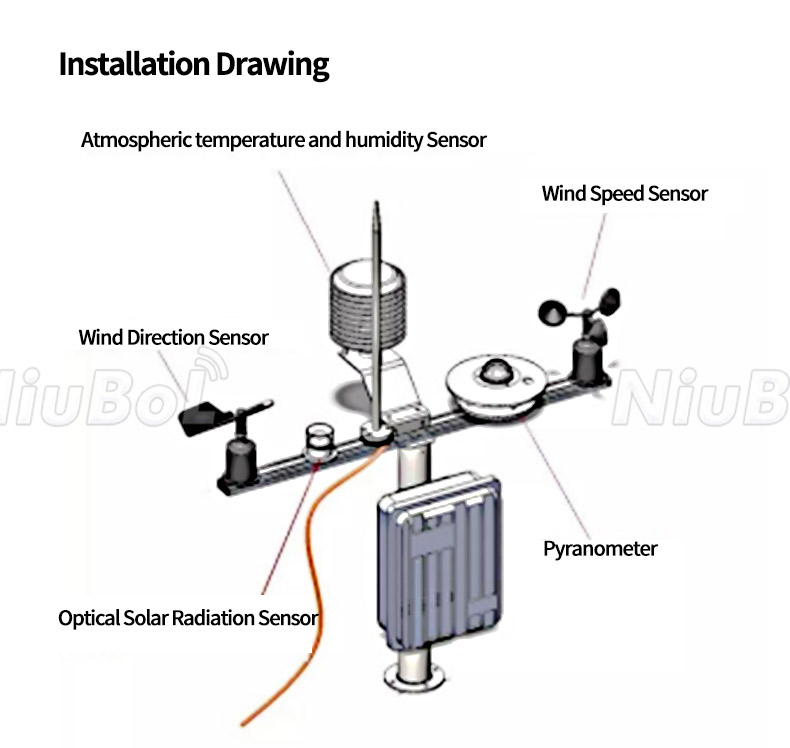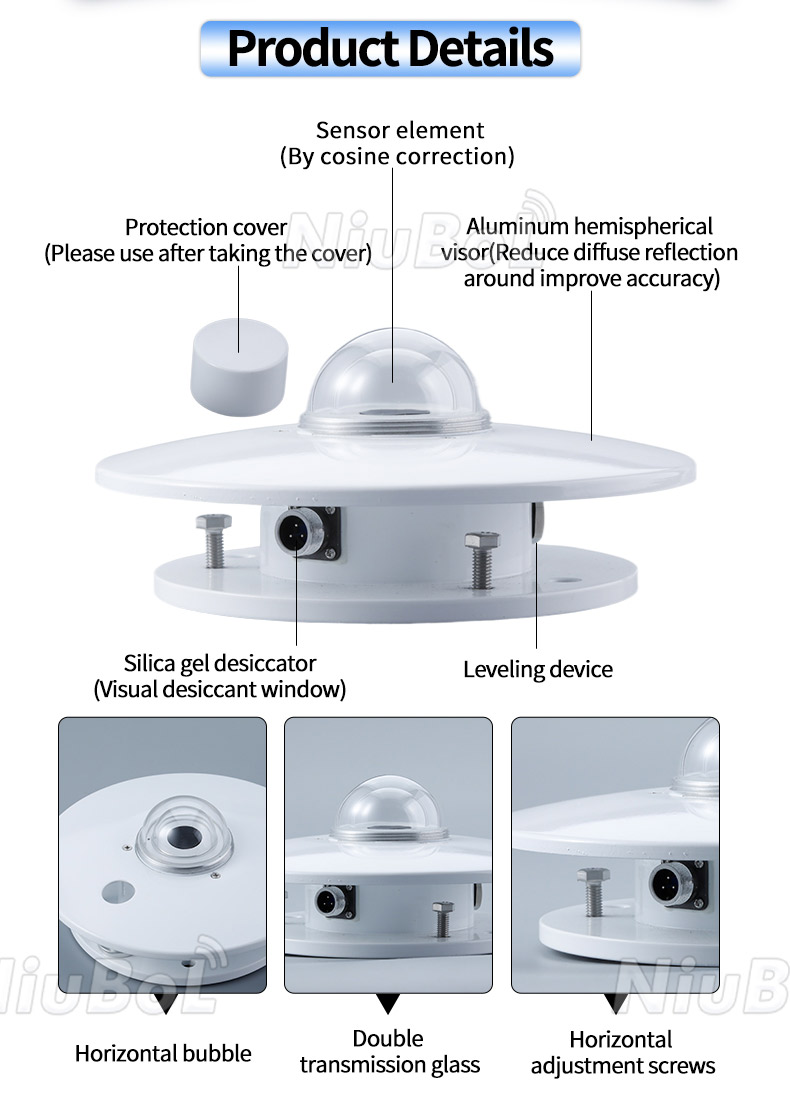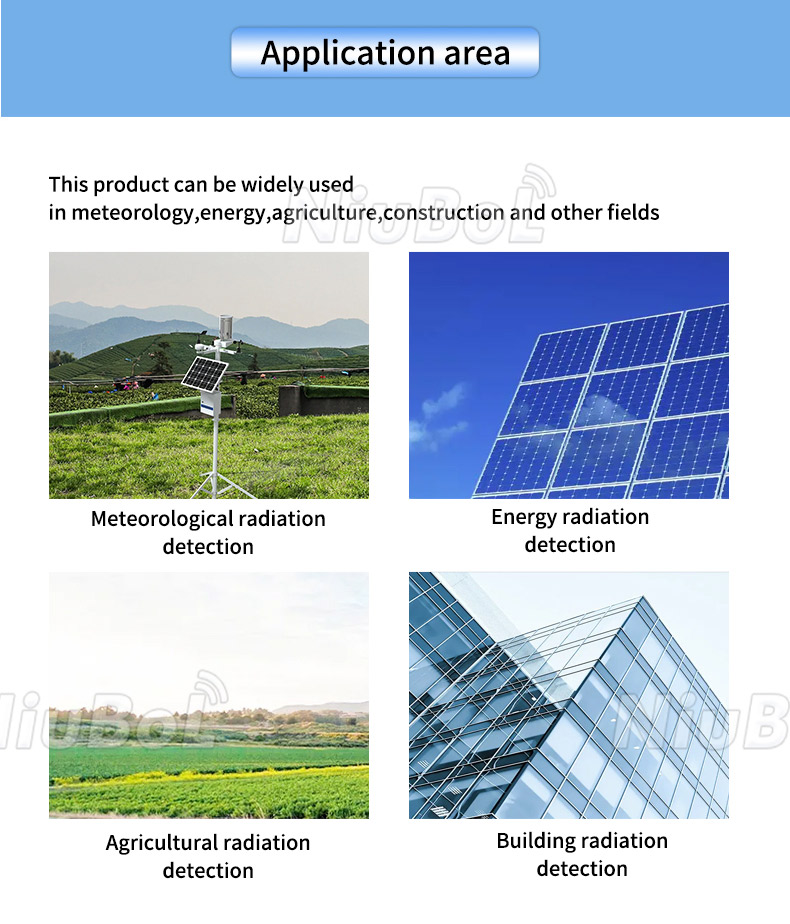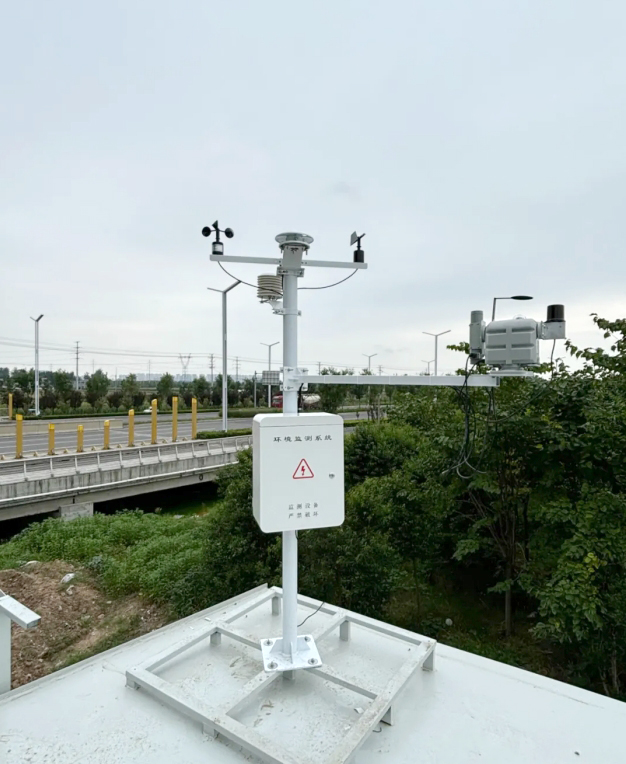

— Blogs —
—Products—
 Consumer hotline +8618073152920
Consumer hotline +8618073152920 WhatsApp:+8615367865107
Address:Room 102, District D, Houhu Industrial Park, Yuelu District, Changsha City, Hunan Province, China
Product knowledge
Time:2024-08-31 17:36:35 Popularity:484
A pyranometer, or solar intensity meter, is an instrument used to measure the total amount of solar radiation. It is designed to measure the total solar radiation received on a horizontal plane, including both the light coming directly from the sun and the radiation scattered by the atmosphere. This instrument has a wide range of applications in many fields such as meteorological monitoring, solar energy applications, and environmental monitoring.
1. Wide measurement range: Pyranometer is capable of measuring the total energy of solar radiation in all wavelength ranges, including visible light, ultraviolet and infrared.
2. Highly accurate measurement: Through sophisticated photocells and photoelectric conversion technology, the Pyranometer is able to provide highly accurate solar radiation measurement data.
3. Multi-disciplinary applications: In the field of meteorology, the Pyranometer can be used to measure the total amount of solar radiation in order to determine the meteorological conditions; in the field of agriculture, it can help farmers to optimise crop cultivation and irrigation plans; in the field of environmental monitoring, it can be used to monitor the total amount of solar radiation in order to assess the health of the environment.

The Pyranometer is composed of a light-sensitive device, a photoelectric converter, a filter and other components. Its working principle is based on the photoelectric effect, i.e., when the sun's rays irradiate the photoconductor, it will excite the electrons and generate a current, which is proportional to the intensity of solar radiation. By measuring the size of the current, the total amount of solar radiation can be deduced.
1. Meteorological field: Pyranometer is one of the necessary measuring devices for meteorological stations, which can be used for weather forecasting and weather research.
2. Agricultural field: By measuring the total amount of solar radiation received by crops, farmers can make reasonable agricultural production plans to improve crop yield and quality.
3. Environmental monitoring field: Pyranometer can be used to monitor solar radiation in cities, industrial areas, mining areas and other areas, providing reference data for environmental monitoring and air pollution control.
4. Solar applications: In solar power generation systems, the Pyranometer is used to measure the total amount of solar radiation to assess the power generation efficiency and energy yield of solar cells.

Regarding the disadvantages of pyranometers, we can synthesise and collate the following points to avoid duplicating the disadvantages of radiometers (usually also referred to as heliometers, but here, to avoid confusion, we refer to radiation measurement equipment in a broader sense):
1. Measurement errors under extreme weather conditions:
In extreme weather conditions such as strong winds, heavy rain, dust storms, etc., the accuracy of the pyranometer's measurements may be affected, resulting in increased measurement errors.
Extreme temperatures (extreme cold or heat) may also affect the performance of the pyranometer, although this is usually categorised as an environmental adaptation issue.
2. Decay of sensor sensitivity:
The sensor sensitivity of the pyranometer may deteriorate after prolonged use, requiring regular calibration and maintenance to maintain the accuracy of the measurement data.
3. High cost:
High-quality pyranometers are expensive and may constitute a financial burden for research organisations or businesses with limited budgets.
Installation, maintenance, and regular calibration are also relatively costly and require specialised knowledge and skills.

4. Limitations on the choice of installation location:
To ensure that the pyranometer accurately reflects the solar radiation in the target area, the choice of installation location needs to be very careful. In some areas or scenarios, finding a suitable installation location may be difficult.
5. Limited environmental adaptability:
Although the pyranometer is designed for use in outdoor environments, performance in extreme climatic conditions (e.g., high altitude, areas of strong electromagnetic interference) may be limited.
6. Complexity of data interpretation:
Measured solar radiation data need to be professionally analysed and interpreted before useful conclusions can be drawn. This can be a challenging task for non-specialists.
Considering that solar radiation is affected by a variety of factors (e.g. atmospheric conditions, cloud thickness, etc.), the comprehensive analysis and evaluation of the data is also a complex task.

In summary, although the pyranometer has a wide range of application prospects and important application value, there are some drawbacks that should not be ignored in the process of using it. In order to ensure the accuracy and reliability of the measurement data, it is necessary to fully understand its performance characteristics and limitations before use, and to carry out strict calibration and maintenance in the process of use.
NBL-W-HPRS-Solar-Radiation-Sensor-Instruction-Manual-V3.0.pdf
Related recommendations
Sensors & Weather Stations Catalog
Agriculture Sensors and Weather Stations Catalog-NiuBoL.pdf
Weather Stations Catalog-NiuBoL.pdf
Related products
 Combined air temperature and relative humidity sensor
Combined air temperature and relative humidity sensor Soil Moisture Temperature sensor for irrigation
Soil Moisture Temperature sensor for irrigation Soil pH sensor RS485 soil Testing instrument soil ph meter for agriculture
Soil pH sensor RS485 soil Testing instrument soil ph meter for agriculture Wind Speed sensor Output Modbus/RS485/Analog/0-5V/4-20mA
Wind Speed sensor Output Modbus/RS485/Analog/0-5V/4-20mA Tipping bucket rain gauge for weather monitoring auto rainfall sensor RS485/Outdoor/stainless steel
Tipping bucket rain gauge for weather monitoring auto rainfall sensor RS485/Outdoor/stainless steel Pyranometer Solar Radiation Sensor 4-20mA/RS485
Pyranometer Solar Radiation Sensor 4-20mA/RS485
Screenshot, WhatsApp to identify the QR code
WhatsApp number:+8615367865107
(Click on WhatsApp to copy and add friends)